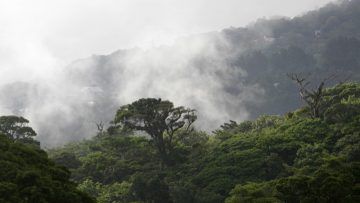Maddie Stone in The Atlantic:

In the biological wonderland of Puerto Rico’s Luquillo Mountains, slinky boasand emerald anoles hang out in lowland tabonuco trees, delicate bromeliads decorate the mountaintop cloud forests, and the island’s eponymous parrotsforage in the canopy. At dawn, the rain forest swells with the mating calls of thousands of coquí frogs. Underpinning this ecological tapestry is a world teeming with arthropods—which is why, when a pair of scientists reported last fall that Luquillo’s arthropod populations were crashing due to climate change, the internet reacted with horror. The Guardian called the research “deeply worrying”; one scientist told The Washington Post that the collapse was “hyper-alarming.” The study, conducted by the biologists Brad Lister of Rensselaer Polytechnic Institute and Andres Garcia of the National Autonomous University of Mexico and published in the Proceedings of the National Academy of Sciences (PNAS), was picked up all overthe web (including by me) and has been cited in more than 75 academic papers since its publication. The work stuck out as a particularly worrying data point in a growing pile of evidence that Earth’s insects might be speeding toward some sort of apocalypse.
But the process of scientific knowledge-gathering can be messy, and scientists with Luquillo’s Long Term Ecological Research (LTER) Program—which furnished much of the data underpinning Lister and Garcia’s conclusions—now believe many of those conclusions are false. These researchers aren’t disputing the fact that climate change is occuring in Puerto Rico, or that insect declines are a serious issue. They just don’t see evidence for a simple link between the two in this particular ecosystem. Instead, they see a rain forest experiencing profound boom-and-bust cycles in response to disturbances such as hurricanes.
More here.
